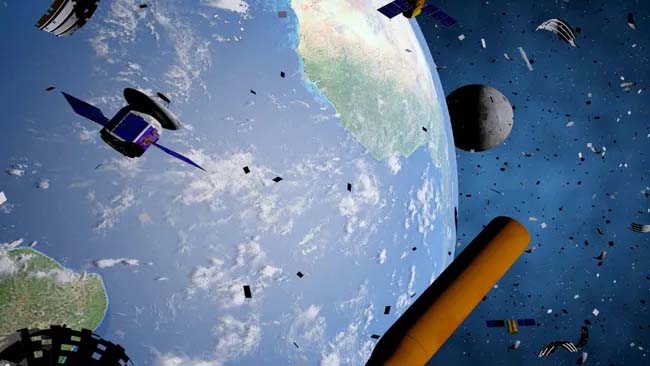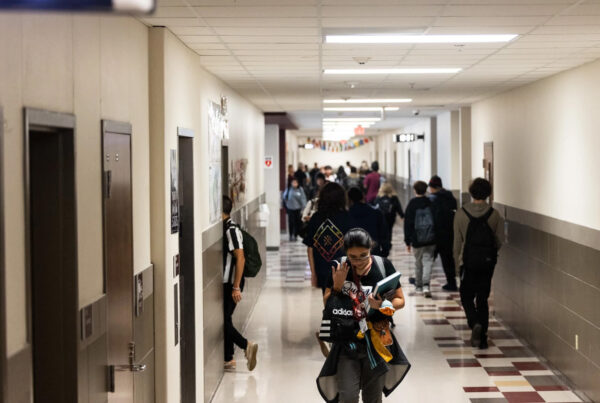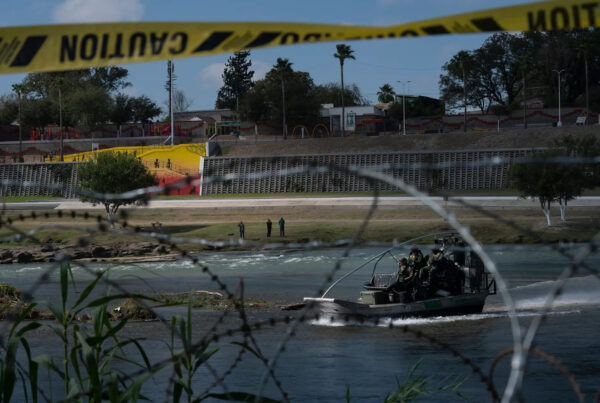If you’ve looked up at the night sky since 2019 and seen a line of white lights, don’t panic. It probably wasn’t one of those Unidentified Aerial Phenomena that Congress held hearings about earlier this year.
Chances are it’s something more benign: a satellite train, possibly a parade of SpaceX Starlink devices aimed at bringing high-speed internet to remote locations. But what goes up must eventually come down, and it’s that coming down part that has the Federal Aviation Administration concerned.
The agency issued a report earlier this month estimating that by 2035, one person could be injured or killed by Starlink debris every two years. SpaceX has refuted those findings, saying their satellites are designed to fully disintegrate upon re-entry.
Moriba Jah, associate professor of aerospace engineering and engineering mechanics at The University of Texas at Austin, said that while space junk is a huge problem, it probably isn’t Starlink satellites we should be most concerned about.
This transcript has been edited lightly for clarity:
Texas Standard: Tell us a little bit about the satellites orbiting Earth right now.
Moriba Jah: Yeah, I mean, look, right now we’re tracking upwards of 50,000 human-made objects, ranging in size from cell phone to the Space Station. And over 5,000 of those are working, but everything else is garbage. Of those 5,000 satellites that are working, half of those belong to Elon Musk.

‘The problem isn’t the Starlink satellites surviving, reentering, hitting somebody,’ says Moriba Jah, an associate professor at UT Austin. ‘The problem is other older objects.’ Photo courtesy the University of Texas
Wow. So how closely are these orbits tracked or monitored, and what dangers do they really or potentially pose?
The Department of Defense and other folks around the globe track these objects with radars and telescopes. But their predicted positions are pretty uncertain. So, you know, collisions are always possible. And certainly, once these things run out of fuel on these orbital highways, if they’re low enough, then they’ll reenter the Earth’s atmosphere.
I can only think of a couple of times, maybe three times, in the past 10 or 20 years when we’ve been warned that there might be a satellite coming down through the atmosphere that could pose a threat here on Earth. How often does this happen, really?
So here’s the thing that’s going to be a bit surprising. There’s probably, at this point, half a dozen or more objects reentering Earth’s atmosphere every day.
Most of that burns up, unfortunately, because of what they’re made out of. The burning up in the atmosphere is now polluting our atmosphere.
» MORE: UT aerospace researcher recognized for pioneering work in space junk
Now, I want to get to the FAA report: The agency estimates one person every two years could be injured or killed by falling SpaceX satellite debris by 2035. Does that square with what you know about satellites?
When Mother Nature is left to clean this stuff up, it means that the angle at which things hit the atmosphere is much shallower, and so their likelihood of survival is increased. I know some of the people working at SpaceX and the way that they design their satellites are different than they used to be back in the 60s and that sort of stuff. So I would put credibility in Starlink satellites pretty much burning up in the atmosphere.
But the problem isn’t the Starlink satellites surviving, reentering, hitting somebody. The problem is other older objects. And even some of the stuff that China’s putting up with these, you know, rocket bodies – things the size of a school bus that are actually surviving and making it back to the planet’s surface. That’s the scary thing.
Is there a way to effectively deal with this issue right now?
So I think the best thing that the U.S. government could do – and other governments around the globe – is to create a circular economy in space, meaning one that focuses on prevention of pollution by prioritizing reusability and recyclability.
You know, Elon has come up with a reusable rocket, so that’s great. But there are no reusable or recyclable satellites. And so it’s like the fate of every satellite we launch is for it to become junk and, on a good day, enter the Earth’s atmosphere – and hopefully not survive reentry in the atmosphere on the way.
» GET MORE NEWS FROM AROUND THE STATE: Sign up for Texas Standard’s weekly newsletters
But if you’re keeping more satellites alive longer, does that not exacerbate the existing problem, which is so much stuff out there orbiting the Earth?
Well, so here’s the thing, right? You know, one of the things that I’ve been working on through my company, Privateer, is making satellites multi-use, kind of like Uber rideshare, so that not everybody has to launch their own satellite. Multiple people could use the satellites that already exist instead of everybody having to launch their own.
So when you hear about this back-and-forth between the FAA and SpaceX over, you know, perhaps one person being killed every two years, which is a quite alarming figure – what do you make of this back-and-forth?
So I think that the risk to humans on the ground from things reentering is real. So that is not something that I would dispute. The only thing that I would dispute is that the cause of those potential fatalities would be due to Starlink satellites.
But the fact that things are reentering and surviving and hitting the Earth’s surface, there’s no doubt about that. And so I would also get on that same bandwagon and say this will cause human deaths if we don’t do anything differently, for sure.














